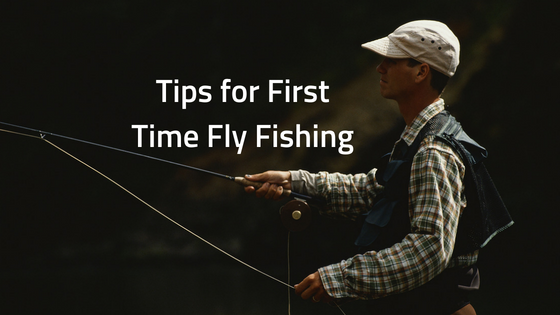Fly fishing is a skill not easily acquired. It can take many years of practice to perfect the cast, and even more study to learn the ins and outs of playing a fish or choosing the proper fly. The more you learn about the process and technique, the better your chances of a successful fishing trip will be. Here are a few fly fishing tips from the pros to get you started.
Don’t Underestimate Your Prey
Too often we assume that fish are stupid or can’t see us coming. In reality, fish have highly developed senses that allow them to see, hear and feel beneath the water. As you approach your target area, be aware that the fish are feeling the vibrations of every step you take, and they are easily frightened away. The less splashing and chaos you cause in the water, the more likely it is that the fish will stick around. Walk slowly and evenly, work with the flow of the water, not against it, and try to step lightly so you don’t stir up the bottom of the river.
Don’t Overcomplicate Your Cast
In the magazines, we often see anglers working with a long lead over 10′ in length. This gives them the chance to reach farther out into the stream or river, and gives the line plenty of room to drift naturally. However, for those just learning the craft, it is usually best to start with a shorter lead around 7-9′ in length. While this gives you less range, it offers more control over where your cast lands.
Remember to Aim Carefully
Fly fishing requires the careful balancing of both gross and fine motor skills. The power for your cast comes from the big muscles in your arm, but the direction of your cast comes from your wrist and fingers. One of the biggest mistakes we see is people bending their wrist to try and add more swing to the rod. This will cause the tip of your rod to become unpredictable, even hitting the ground behind you. Practice keeping the wrist strong while using your arm to actually drive the rod.
Study the Insects
Before you go wading into the water and casting away, it will do you much good to sit on the bank and observe the insects for a little while. See what kinds of insects are landing on the water and where. Watch for signs of the fish feeding on a particular insect out of the group. This will help you determine what kind of fly you should be using.
Adjust Gently
During the learning stages, there is a tendency to over-correct if your line does not land exactly as you expected. Learning the way the line drifts with the water is more of an art than a science. Resist the urge to yank the line up and around if you want it to move closer to your target. Instead, gently use the tip of the rod to make small adjustments that don’t upset the fly where it has landed.
Remember to Use the Rod
Once you have a fish on the hook, it’s time to start playing the fish. This process is where the real fun begins, but it can also be very frustrating if your line keeps breaking or the fish keeps getting away. Most often, we see would-be anglers holding their rods high in the air, yanking back and forth on the line as the fish runs. Instead of trying to fight the fish with the tip of the rod in the air, lower the rod toward the water, below a 45 degree angle, and gently swing the whole rod side to side as the fish runs.
For more great fly fishing tips from the experts, contact Reservations Unlimited today and schedule your guided fly fishing trip today!


